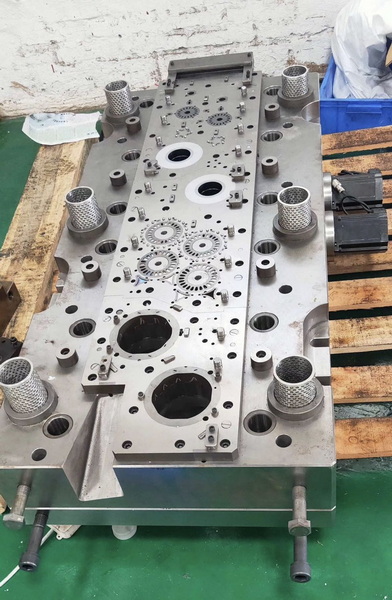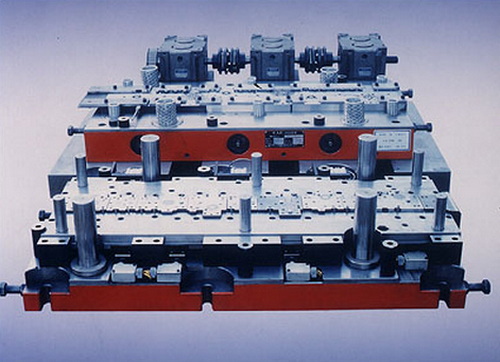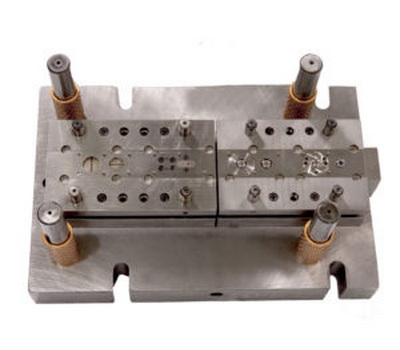Content Menu
● Introduction
● Understanding Carbide Lamination Dies
>> Properties of Carbide Materials
>> The Working Principle of Lamination Dies
● Key Advantages of Carbide Lamination Dies
>> Durability and Wear Resistance
>> Precision and Accuracy
>> Cost-Effectiveness
>> Versatility in Manufacturing
>> Adaptability to Different Manufacturing Environments
● Applications of Carbide Lamination Dies
>> Electric Motor Manufacturing
>> Automotive Industry
>> Electronics Production
>> Aerospace Components
● Future Trends in Carbide Lamination Dies
>> Technological Advancements
>> Sustainable Manufacturing Practices
>> Increased Demand for Customization
● Conclusion
● Frequently Asked Questions
>> Q1. What materials are carbide lamination dies made from?
>> Q2. How do carbide lamination dies improve manufacturing efficiency?
>> Q3. In which industries are carbide lamination dies commonly used?
>> Q4. What are the advantages of using carbide over other materials for dies?
>> Q5. Can carbide lamination dies be customized for specific applications?
Introduction
In the realm of precision manufacturing, the choice of tooling can significantly impact the quality, efficiency, and cost-effectiveness of production processes. Among the various tooling options available, carbide lamination dies stand out due to their exceptional properties and performance. These dies are essential in industries such as automotive, electronics, and electrical engineering, where precision and durability are paramount. This article explores the key benefits of using carbide lamination dies in precision manufacturing, highlighting their advantages, applications, and future trends.

Understanding Carbide Lamination Dies
Carbide lamination dies are specialized tools made from tungsten carbide, a material known for its hardness and wear resistance. These dies are designed to shape and cut materials into specific forms, particularly in the production of laminated components such as electric motor stators and rotors. The unique properties of carbide make these dies suitable for high-volume production, where precision and consistency are critical.
Properties of Carbide Materials
Carbide materials are composed of carbon and a metal, typically tungsten. This combination results in a material that is not only hard but also resistant to deformation and wear. The hardness of carbide allows it to maintain sharp edges over extended periods, making it ideal for cutting and shaping applications. Additionally, carbide can withstand high temperatures, which is beneficial in manufacturing processes that generate heat.
The Working Principle of Lamination Dies
Lamination dies operate by applying pressure to sheets of material, typically metal, to create a desired shape. The process involves stacking multiple layers of material, which are then pressed together using the die. This method is particularly effective for producing components that require high precision and uniformity. The design of carbide lamination dies allows for intricate shapes and features, making them versatile tools in manufacturing.
Key Advantages of Carbide Lamination Dies
Durability and Wear Resistance
One of the most significant advantages of carbide lamination dies is their durability. The hardness of carbide materials means that these dies can withstand the rigors of high-volume production without significant wear. This durability translates to longer tool life, reducing the need for frequent replacements and maintenance. As a result, manufacturers can achieve higher productivity levels while minimizing downtime.
Precision and Accuracy
Precision is crucial in manufacturing, especially in industries where components must fit together perfectly. Carbide lamination dies are engineered to provide exceptional accuracy, ensuring that each part produced meets stringent specifications. The ability to maintain tight tolerances is essential for applications such as electric motors, where even minor deviations can lead to performance issues.
Cost-Effectiveness
While carbide lamination dies may have a higher initial cost compared to other materials, their long-term cost-effectiveness is undeniable. The extended tool life and reduced maintenance requirements lead to lower overall production costs. Additionally, the precision offered by carbide dies can reduce material waste, further enhancing their economic viability.
Versatility in Manufacturing
Carbide lamination dies are highly versatile and can be used in various manufacturing processes. They are suitable for stamping, cutting, and forming a wide range of materials, including metals and composites. This versatility allows manufacturers to use carbide dies across different applications, making them a valuable addition to any production line.
Adaptability to Different Manufacturing Environments
The adaptability of carbide lamination dies to various manufacturing environments is another key benefit. Whether in high-speed production lines or more traditional settings, these dies can perform effectively. Their ability to maintain performance under different conditions makes them a reliable choice for manufacturers looking to optimize their processes.

Applications of Carbide Lamination Dies
Carbide lamination dies find applications in several industries, each benefiting from their unique properties. Some of the most notable applications include:
Electric Motor Manufacturing
In the production of electric motors, carbide lamination dies are used to create stators and rotors with precise dimensions. The high accuracy of these dies ensures that the components fit together seamlessly, which is critical for the efficient operation of the motor.
Automotive Industry
The automotive industry relies heavily on carbide lamination dies for producing various components, including gears, brackets, and housings. The durability and precision of these dies contribute to the overall quality and performance of automotive parts.
Electronics Production
In electronics manufacturing, carbide lamination dies are used to create intricate components such as connectors and circuit boards. The ability to produce small, precise parts is essential in this industry, where space and functionality are often at a premium.
Aerospace Components
The aerospace industry demands the highest levels of precision and reliability. Carbide lamination dies are employed to manufacture critical components that must withstand extreme conditions. The durability of carbide materials ensures that these components can perform reliably in demanding environments.
Future Trends in Carbide Lamination Dies
As technology continues to advance, the future of carbide lamination dies looks promising. Several trends are emerging that will shape the development and use of these tools in precision manufacturing.
Technological Advancements
Innovations in manufacturing technology are leading to the development of more sophisticated carbide lamination dies. These advancements include improved designs that enhance performance and efficiency. Manufacturers are increasingly adopting computer-aided design (CAD) and computer-aided manufacturing (CAM) technologies to create more complex and precise dies.
Sustainable Manufacturing Practices
With a growing emphasis on sustainability, manufacturers are exploring eco-friendly materials and processes. Carbide lamination dies can be produced using sustainable practices, and their long lifespan contributes to reduced waste in manufacturing. As industries strive to minimize their environmental impact, the demand for sustainable tooling solutions will likely increase.
Increased Demand for Customization
As industries evolve, the need for customized solutions is becoming more prevalent. Carbide lamination dies can be tailored to meet specific requirements, allowing manufacturers to produce unique components that cater to niche markets. This trend towards customization will drive innovation in die design and production.
Conclusion
Carbide lamination dies play a crucial role in precision manufacturing, offering numerous benefits that enhance productivity, accuracy, and cost-effectiveness. Their durability, precision, and versatility make them an indispensable tool in various industries, from automotive to aerospace. As technology continues to advance, the future of carbide lamination dies looks bright, with opportunities for innovation and sustainability. Manufacturers who invest in these tools will likely see significant returns in terms of efficiency and product quality.

Frequently Asked Questions
Q1. What materials are carbide lamination dies made from?
Carbide lamination dies are primarily made from tungsten carbide, a composite material known for its hardness and wear resistance.
Q2. How do carbide lamination dies improve manufacturing efficiency?
Carbide lamination dies enhance manufacturing efficiency by providing longer tool life, reducing maintenance needs, and ensuring high precision, which minimizes material waste.
Q3. In which industries are carbide lamination dies commonly used?
Carbide lamination dies are commonly used in industries such as automotive, electronics, aerospace, and electric motor manufacturing.
Q4. What are the advantages of using carbide over other materials for dies?
The advantages of using carbide include superior durability, wear resistance, precision, and the ability to withstand high temperatures, making it ideal for high-volume production.
Q5. Can carbide lamination dies be customized for specific applications?
Yes, carbide lamination dies can be customized to meet specific manufacturing requirements, allowing for the production of unique components tailored to niche markets.
















